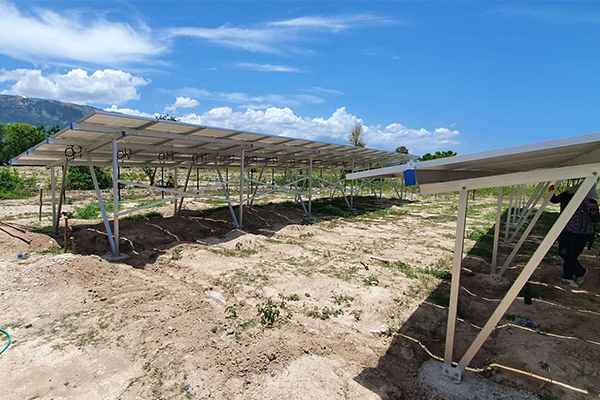Ground solar racking systems are structures designed to support solar panels on the ground. They are characterized by several distinct features that contribute to their effectiveness in solar energy harvesting.
1.1 Material Composition
These systems are typically crafted from high – strength materials, with aluminum and steel being the most prevalent choices. Aluminum is favored for its lightweight nature, which simplifies the installation process. It also offers excellent corrosion resistance, making it suitable for a wide range of environmental conditions. Whether in coastal areas with high humidity or regions with frequent rain, aluminum – made ground solar racking systems can maintain their structural integrity over long periods.
Steel, on the other hand, provides exceptional strength and durability. It can withstand extreme weather events such as strong winds, heavy snowfall, and even minor seismic activities. The high – grade steel used in these systems is often galvanized, adding an extra layer of protection against rust and corrosion. This ensures that the racking system remains stable and reliable, providing a long – term support structure for solar panels.
1.2 Installation Flexibility
Ground solar racking systems offer remarkable installation flexibility. They can be installed on various types of terrains, including flat ground, gentle slopes, and even hilly areas with proper engineering adjustments. For flat terrains, the installation process is relatively straightforward, with the racks being easily anchored to the ground using simple foundation methods such as concrete footings or screw piles.
In sloped areas, the racking system can be designed to follow the contour of the land. This not only maximizes the use of available space but also ensures that the solar panels are positioned at an optimal angle for sunlight capture. Specialized mounting brackets and adjustable components allow for precise alignment, enabling the system to adapt to different slope gradients.
1.3 Adjustable Tilt and Tracking Mechanisms
As mentioned before, there are different types of ground solar racking systems in terms of tilt and tracking capabilities. Fixed – tilt systems have the solar panels installed at a pre – determined, unchanging angle. This angle is carefully calculated based on the geographical location of the installation site. For example, in regions closer to the equator, the tilt angle may be relatively small to maximize the capture of the more vertically – incident sunlight. In contrast, areas farther from the equator will require a steeper tilt angle to ensure that the solar panels can receive sufficient sunlight throughout the year.
Trackers, on the other hand, are a more advanced and dynamic solution. These systems are equipped with motors and sensors that enable the solar panels to move and track the sun’s path across the sky. There are two main types of trackers: single – axis and dual – axis. Single – axis trackers rotate the solar panels along a single axis, usually in an east – west direction, to follow the sun’s daily movement. Dual – axis trackers, on the other hand, are more sophisticated and can rotate the panels both horizontally and vertically. This allows the solar panels to constantly face the sun at the most optimal angle, significantly increasing the amount of sunlight they can capture and, consequently, the energy production.

